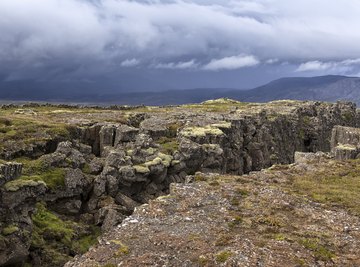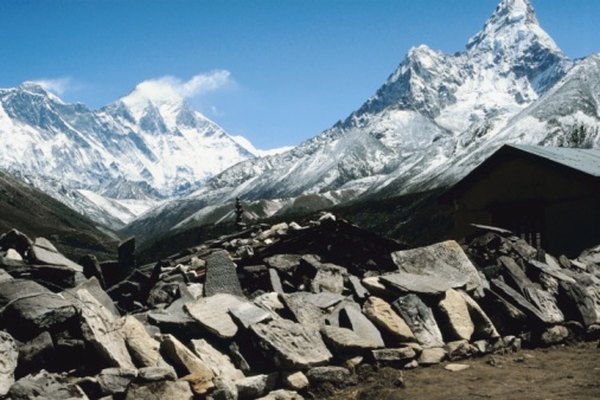
About 45 million years ago, when the Eurasian continent collided with the Indian subcontinent, the Himalayan mountains formed. In plate tectonics, the scientific theory that explains the structure of the Earth’s crust and how it moves, the planet has roughly nine major plates and many smaller ones, arranged in puzzle pieces around the globe. These plates skate over the mantel of the Earth, an inner layer composed of rocks that surround the Earth’s core. As a unifying theory in geology, most geologists subscribe to plate tectonics as it helps them describe these changes that occur to the Earth’s crust.
TL;DR (Too Long; Didn't Read)
When continental plates collide, mountains form. The least understood of all tectonic boundaries, continental plates have greater density, sometimes reaching lower than the mantel. When these plates collide, it’s reminiscent of the force of two bulls butting heads. While some subduction can occur, the effects at these boundaries often include a wide-ranging and creased mountain range, intense crumpling, faulting and a condensed, thickened area inside the collision zone.
Convergent Plate Boundaries
Where plates meet in plate tectonics, three types of boundaries form: convergent, divergent and transform. Convergent boundaries include when two continental plates collide, two oceanic plates converge or when an oceanic plate meets a continental plate. Several events can occur. Generally, when the oceanic plate hits a continental one, the continental plate uplifts, and the oceanic plate goes beneath it or subducts. When two oceanic plates collide, the older, heavier plate usually subducts beneath the other.

Continental and Oceanic Plates
Continental plates typically do not subduct beneath oceanic plates because of how thick and buoyant they are. Instead, continental plates typically bend, break and crumple, creating folds, thick creases and mountain ranges like the Andes, Swiss Alps and the Himalayas. Rocks trapped within the collision zone undergo changes because of the extreme heat and squeezing. Called metamorphic rocks, you can find slate, gneiss and schist in these mountain ranges. This includes the eroding Appalachians, which at one time stood as high or higher than the Himalayas, and formed when the North American plate collided with Gondwana, a super continental plate that included South America and Africa at one time.
Volcanoes and Mountains
In areas where oceanic plates collide with continental plates, volcanoes often form, like the volcanoes that circle the Pacific Ocean called the Ring of Fire. Along the Pacific Plate in the Northwestern United States, the Cascade Mountain range consists of several volcanoes formed by the oceanic plate subducting beneath the continental one. Transform boundaries also form, like the San Andreas fault zone, where the two sides of the fault move in opposite directions sliding past each other. The Pacific Plate on the west grinds horizontally to the southeast, while the North American plate moves northwest.
References
About the Author
As a journalist and editor for several years, Laurie Brenner has covered many topics in her writings, but science is one of her first loves. Her stint as Manager of the California State Mining and Mineral Museum in California's gold country served to deepen her interest in science which she now fulfills by writing for online science websites. Brenner is also a published sci-fi author. She graduated from San Diego's Coleman College in 1972.
